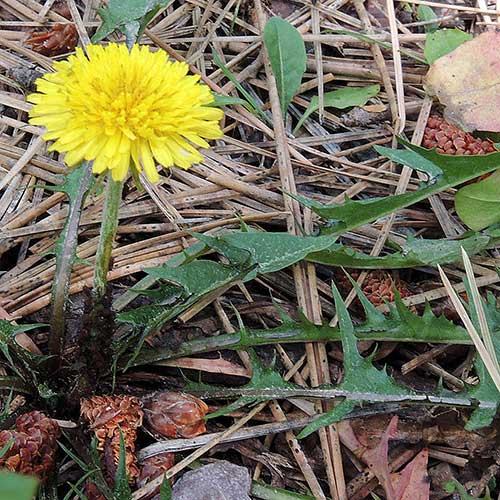Common Dandelion
Taraxacum officinale

Observed along a sunny trail near a riparian area in the ponderosa forest at Washington Park, Gila Co., Arizona. 8 Aug. 2015. Around the base of this plant a colony of aphids have been established. The black coloring is sooty mold growing on the waste honeydew excreted by the aphids.
Sponsored Links:
FLOWERS:
All of the florets in the composite head have strap-shaped corollas and bloom during the spring. The heads are solitary on usually very tall stems.
LEAVES: All of the leaves are basal, at ground level in a rosette. The leaves are sharply lobed and the terminal lobe is often arrow-shaped.
ANNUAL: Herbaceous weed typically growing very low and only appearing taller with the flowering stalks.
RANGE: Found in disturbed places pretty much throughout the temperate world. This plant is native to Eurasia and thus is an exotic here. Dandelions often reproduce vegetatively - the seeds
are clones rather than new plants formed from a zygote. Thus populations may be genetically similar. Moist spots particularly lawns and gardens as opposed
to undisturbed ponderosa woodlands.
FRUIT: Each head produces many seeds with a dense ball of plume bristles. The supporting stem elongates even further as the seeds mature raising them up higher into the wind currents for dispersal.
UNARMED.
Asteraceae -- Sunflower Family
More Information:
- Southwest Environmental Information Network
- USDA Plant Profile
- Encyclopedia of Life
- Google Images
- Google Scholar Literature Search